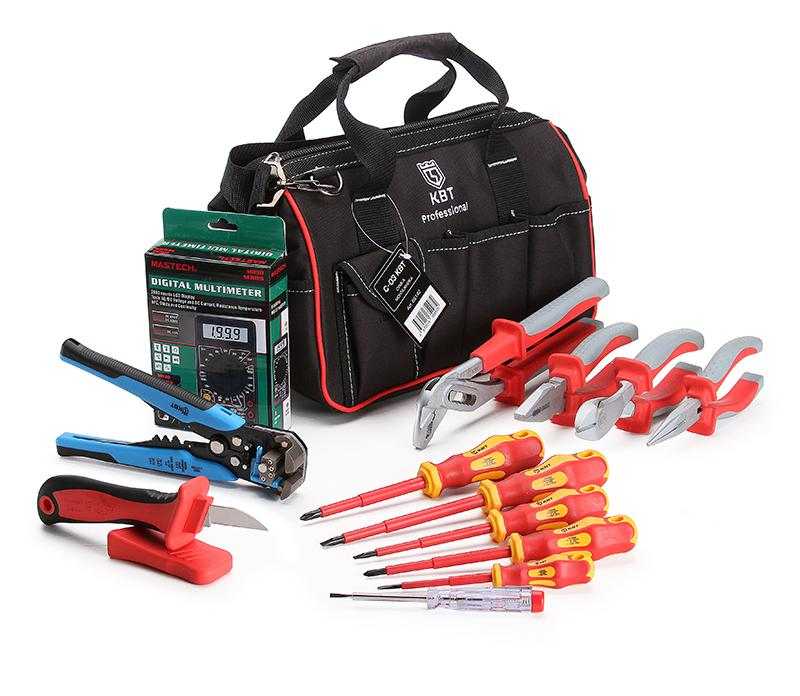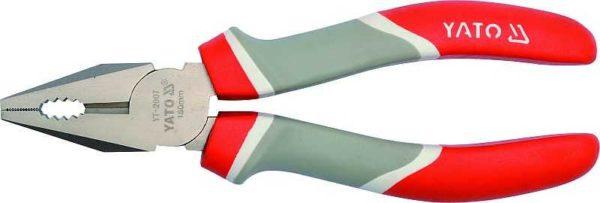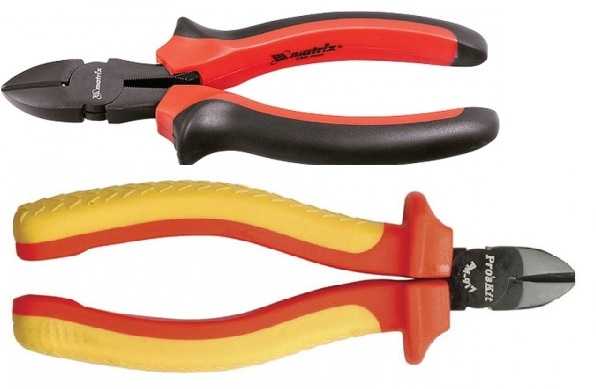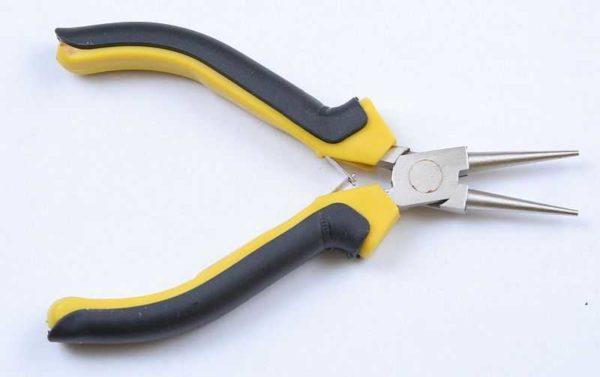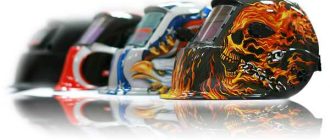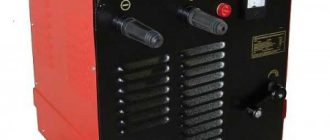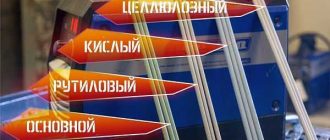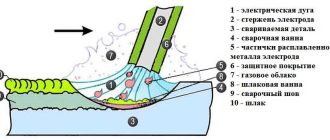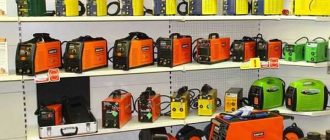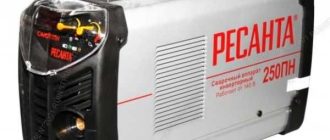If you plan on wiring, installing and connecting outlets yourself, you will need a decent amount of different tools. You’ll need measuring devices and some power tools to make the work go faster. What electrician’s tool is necessary for a home handyman, how it should be read on.
Contenido del artículo
Handheld power tools
All hand tools are convenient to keep in a suitcase, that is, a special plastic case with holders. You can use a small suitcase or a bag with a lot of departments, but they are not so convenient.
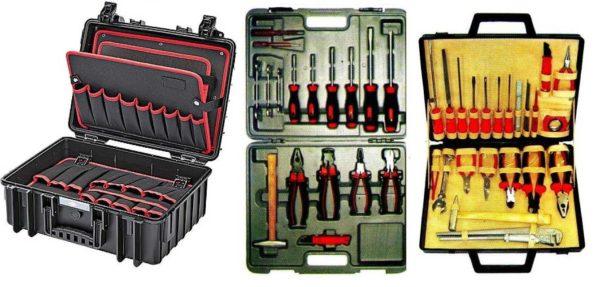
There are ready-made sets of electrician, but good quality tools are expensive, to lay out at once a fairly large sum is not always possible. Therefore, many people prefer to collect it gradually, buying as needed separately, selecting “for yourself” manufacturer and capabilities.
General requirements for wiring tools are quite extensive. I will not list all of them, here are some of them concerning our tool:
- The handle of the hammer must be free of knots, smoothly machined and securely fastened. There should be a thickening to the free end.
- The power tool should have no damage to the body and the cord and plug should be in good working order. The switch must operate clearly, and the device must not make noise, knocking or vibration when operating. Plug-in tools – drills, wrenches, screwdrivers, must not have cracks, gouges, burrs.
- Hand tools must be designed for work with voltage up to 1000 V. Be without damage, cracks, bloating and defects. Screwdriver rods must be insulated. Insulation must end at a distance of no more than 10 mm from the end of the stinger. Pliers, pliers, pliers, etc., insulating handles must have anti-slip stops with a height of at least 10 mm on the right and left parts, and 5 mm on the upper and lower parts.
There are requirements for all hand tools and measuring tools. So what should be in the kit.
Gloves
If it is necessary to perform a number of works under voltage, it is not enough to have power tools with dielectric handles and you need to wear dielectric gloves. They must be included in the kit.
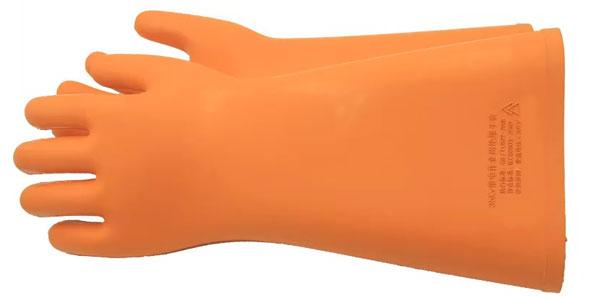
They can have different voltage tolerances, but we need up to 1000 volts.
Check their suitability before starting work. There should be no cracks, cuts or punctures on them. To check, blow air into the glove and squeeze the socket, no leakage is acceptable.
Screwdrivers
Without screwdrivers home electrician can not do without. You need them flat and cross-shaped, and different sizes. It can be a set of screwdrivers of different sizes and shapes or one handle with replaceable pads. But since it is a power tool, the handle should be made of dielectric material with a finger rest.
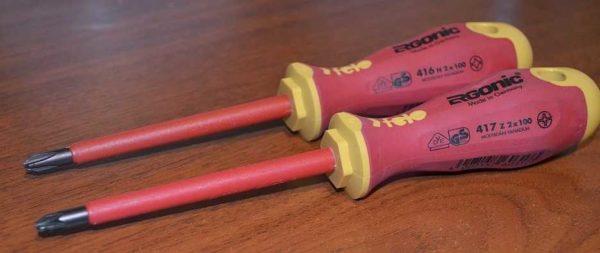
Branded screwdrivers have an insulated metal rod, leaving only a small piece of metal exposed. This reduces the chance of short circuits and electrocution when working. Such screwdrivers are not cheap, but you can insulate an ordinary screwdriver with heat shrink tubing. The effect is just as good.
It is good to have a torque screwdriver. The fact is that when connecting the same circuit breakers in the switchboard, connecting wires to terminals or connecting household appliances, it is required to tighten the contact with a certain force. This force is usually specified in the instructions and expressed in nanometers. But since this force cannot be measured with an ordinary screwdriver, they simply try to tighten the contact more firmly. But in order not to guess and not to twist at random, you need a torque screwdriver.
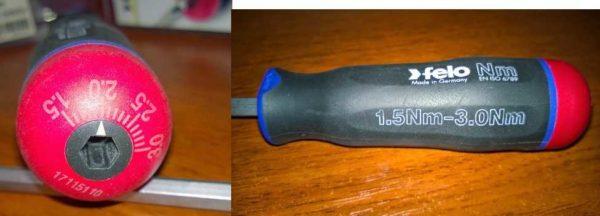
They are made mainly for bits, in the handle there is a hidden mechanism that allows you to create exactly the specified force. It is set on the scale at the top of the handle. Then, you work it as usual, but when you apply more force than the set force, the bit slips with a characteristic sound. So it turns out that you have tightened the contact with the required force. It should also be said that to tighten to the standard requirement of 2 Nm – it is necessary to work very hard.
Horn wrenches
If you are going to do electrics only in the apartment, then the keys may not be necessary. But if you have a garage or a dacha, you can’t do without them.
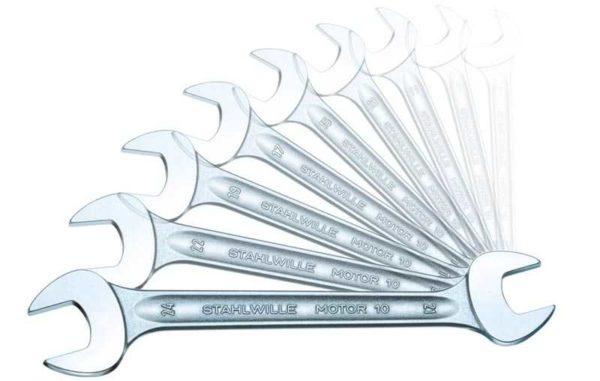
You may need a variety of sizes, but mostly small and medium. You will need from 6 mm to 17-19 mm. Since this tool is usually used when the voltage is disconnected, it is not insulated.
Pliers, pliers, pliers, wire cutters.
All tools must have insulated handles, and the insulation must withstand voltages up to 1000 V, which must be written on the handles. These tools sometimes have to be operated without voltage removal, so the insulation requirements are high. Even if you are a non-professional electrician. Electrocution has the same consequences for everyone. Therefore, it is better not to save money and buy a tool with quality insulation.
What tools are needed? Quite a large list, but you can do without some of them:
- Pliers. Needed when working with single-core conductors. They are good for holding thick and bite the wire.
- Pliers or duckbill pliers, sometimes called utiks. A more miniaturized electrician’s tool, with thin and long jaws. If the jaws are just long and thin, they are pliers, but if they are flattened at the top – like a duck – they are pliers. The debate about what they should be called never stops. I think they’re just a type of pliers.
This type will be useful to electricians when soldering wires, working with stranded wires, single-core, but small diameter. - Pliers or cutters. Pliers have cutters, but it is not always convenient to work with them – they are located in such a way that it is not always possible to get them to the right place. Pliers with a sharp blade at its small size can cope even with rather solid wires in diameter.
- Round-nose pliers. Rarely used and you can do without it, but it is convenient to twist rings on the ends of conductors at bolted connections.
These are general purpose hand tools for the electrician, but there are still specialty tools.
Installer’s knife
To remove the insulation from a cable or wire – for this you need an electrician’s knife, which is also called a fitter’s knife. It comes with a detachable blade, which is also retractable. It is an improved and more reliable variation of a wallpaper knife or paper knife.
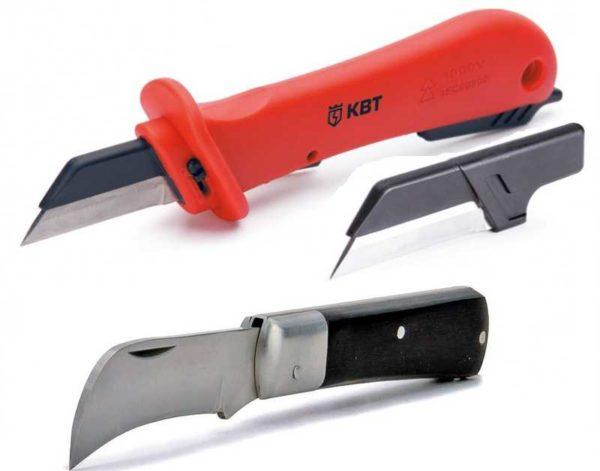
The second variation is the one with a hinged blade. It works on the principle of a penknife, but again has features, the blade is wider and thicker, there may be a hook at the end, which is convenient to cut cable insulation.
According to the idea, a tuning knife should also have a handle that can withstand a voltage of at least 1000 V. But it is usually used to work with the voltage removed, so in this case the requirement can be neglected.
Stripper – a tool for stripping insulation
When installing electrical wiring, connecting household appliances, it is necessary to remove insulation. If you have a certain skill you can do with cutters or wire cutters, but until you learn how to do it, you will use up a lot of wire. Besides, even if you have considerable experience with thin or stranded conductors, it is difficult to work with wire cutters – often the strands are damaged. Therefore, it is desirable to have in the suitcase of the electrician and a tool for stripping insulation or stripper.
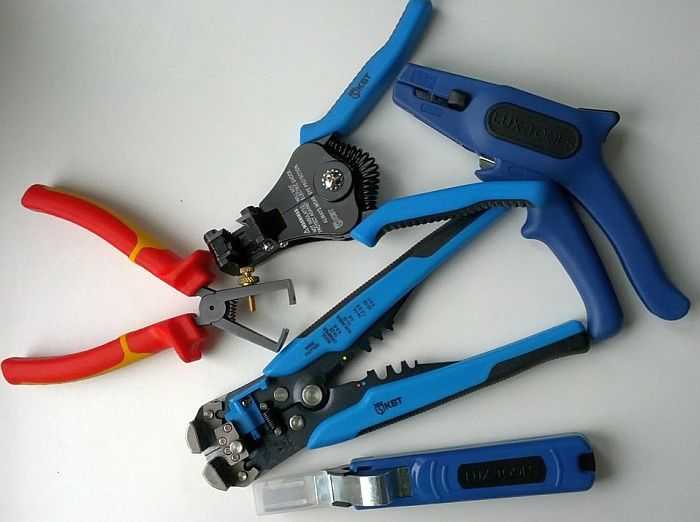
They have a variety of configurations, which have a slightly different mechanism of operation, but they quickly remove the insulation and leave the wires intact.
Chisel and hammer
What else you can not do without when laying wiring is a chisel and a hammer. After all, the wiring is laid mostly hidden, and for this purpose it is necessary to make grooves. If the amount of work is small, you can cope and hand tools – a chisel with a hammer, but it is better to have at least a perforator at hand.
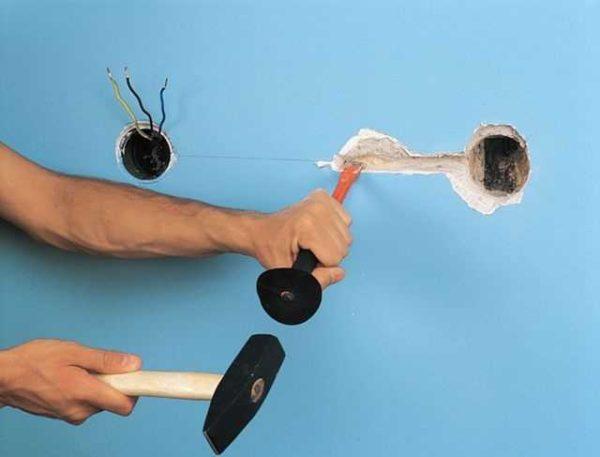
Control and measuring devices
At any trouble with household appliances or problems with wiring, it is necessary to make measurements. For this purpose, your kit should have a multimeter. For simple phase detection you will need an indicator screwdriver, and to calculate the conductor cross-section you will need a caliper or micrometer. These are all necessary measuring instruments that should be in the electrician’s kit.
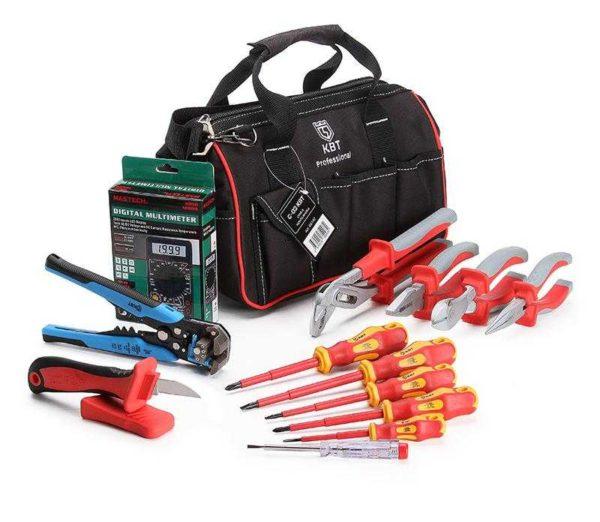
Multimeter or tester
There are two types of household electrical measuring devices – testers and multimeters. In testers, the measurement results must be calculated according to the appropriate scale and the deflection of the arrow, taking into account the divider/multimeter, which is set at the time of measurement on the switch. In general, you have to be careful. That’s why electricians are probably more likely to find multimeters that give the result immediately on the digital display, and even with units of measurement.
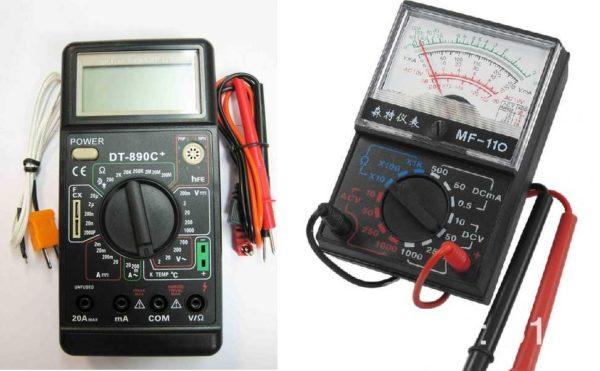
What is important to pay attention to when choosing a multimeter is the accuracy class and measurement limits. The higher the accuracy class, the less error the device has. For example, multimeters with an accuracy class of 2.5 give an error of 10%. Even if you need to measure the voltage in the power supply network 220 V, plus or minus 22 V is a lot. If we talk about more accurate measurements, such deviations are unacceptable. Therefore, the most widespread multimeters with an accuracy class of 3.5, which give an error of about 1%. This is already more reliable results, which are enough for the home master. There are devices with a class 5 and higher, but their cost is high.
How to measure with a multimeter read here.
Indicator screwdriver
The second necessary tool is an indicator screwdriver. This is a small device that costs very little, but which is very convenient to work with. The presence of phase voltage on the conductor is checked by simply touching the tip of the screwdriver to a bare conductor, a current-carrying part or a socket. The LED integrated in the handle lights up.
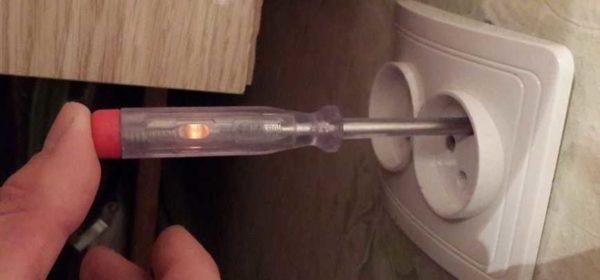
This is really a very necessary thing for an electrician, with which you can instantly test the presence of dangerous phase voltage before starting work.
Caliper or micrometer
Strange as it may seem, but this tool is also a must-have for the home electrician. It will come in handy when buying a cable or wire. The whole point is that the real cross-section of conductors can differ significantly from the parameters declared by the manufacturer. And since the cross-section of the wire depends on the load with which it can work, such a difference can be critical and lead to failure of the wiring and even to fire.
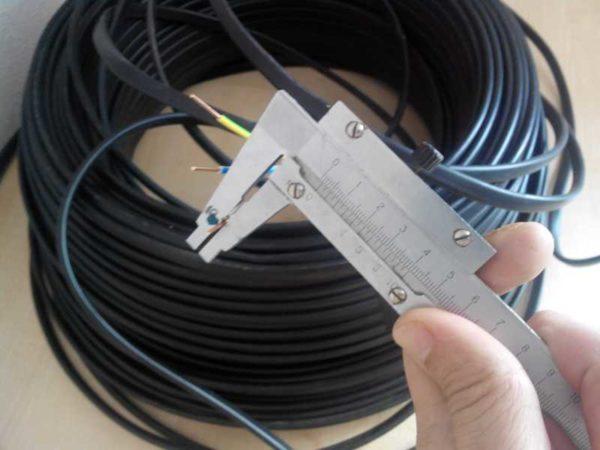
Therefore, before buying any cable or wiring should measure the diameter of the wire, and determine its cross-section. And on this data to decide whether to buy this product. On how to determine the cross-section of the cable by diameter, read here.
Power tool
Screwdriver
The most popular tool for electricians in this category is probably the screwdriver. When performing work on fixing cable ducts, screwing screws, etc. Usually screwdrivers have their own case, but if there is none, there are options that are small in size (screwdriver screwdriver) and will easily fit in the set.
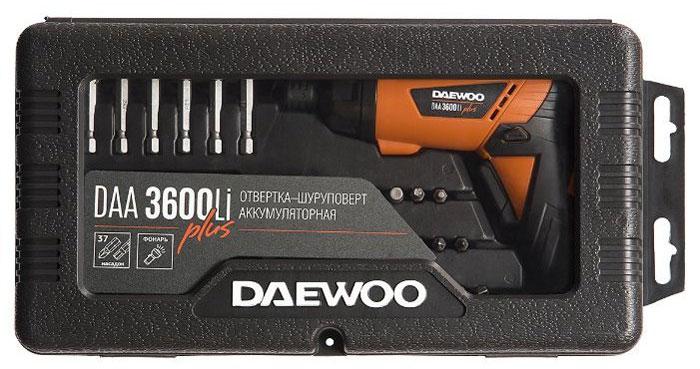
The presence of this group of tools is not at all mandatory, but greatly speeds up the most unpleasant work – the device of the furrows. For this, a variety of tools with sawing disks, but traditionally used two: a perforator with a spatula attachment and a shtroborez. Perforator, in general, a useful thing and relatively inexpensive, because many people have it. Here with its help and you can relatively quickly make grooves in the walls for laying wires – strobes.
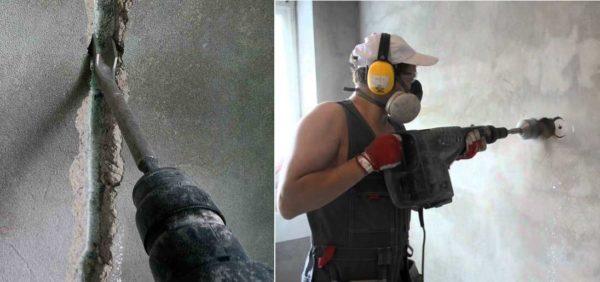
It is necessary to have a number of accessories that facilitate and speed up the work, such as: crowns for installing sockets and switches, a set of pobeditovyh drills, drills for drilling walls.
Professionals have in the arsenal of shtroborez. This is a specialized tool with two parallel saw disks, which are set at the desired distance, setting the width and depth of the groove. These devices are connected to an industrial vacuum cleaner, so that when working dust flies minimum. But the price tag on this technique is high and just for home use to buy expensive narrow-specialized equipment is unlikely to be anyone.
This is, perhaps, all the tools necessary for the electrician for home use. Many more tools will be useful, for example, a stapler to quickly fix wires, etc. But we have named the main list.

